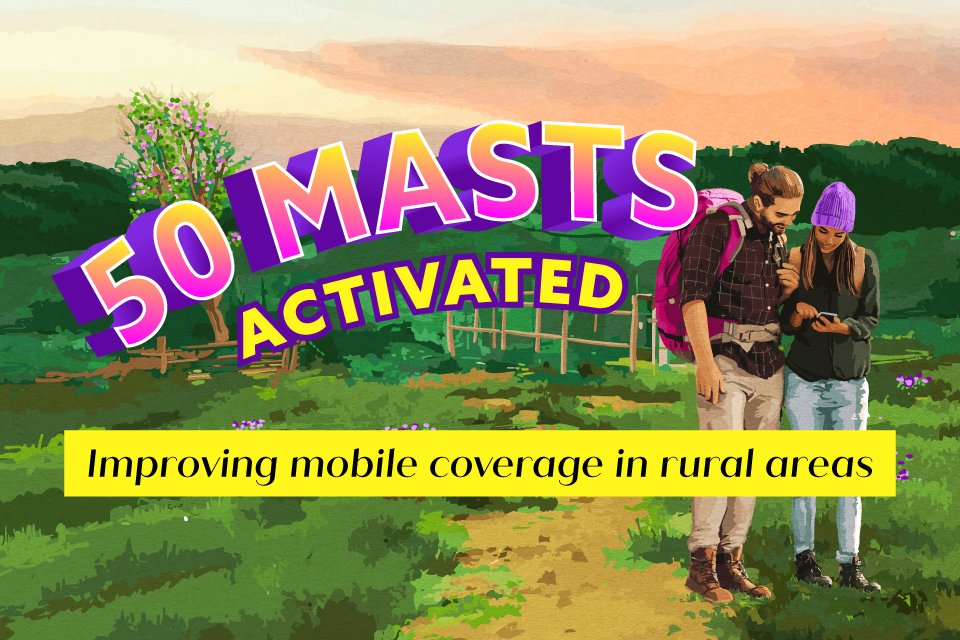
Despite consisting of relatively small islands, the UK so far doesn’t have complete 4G coverage, and in fact there are extensive rural areas with no 4G at all.
But the government and mobile networks are working to solve this through the Shared Rural Network (SRN) project, and a big step has been made in that direction, as 50 government-funded rural 4G mast upgrades have now gone live. Specifically, nine of those masts are in England, 28 in Wales, and 13 in Scotland.
These masts can be used by all of the UK’s networks, as the SRN project entails the sharing of some existing masts and the building of new shared masts, with the goal of extending 4G geographic coverage to 95% of the UK by the end of 2025.
Areas benefitting from the new masts in England are: Bishop Auckland, Carlisle, Hexham, Penrith and Solway, South Shropshire, Thirsk and Malton, Whitehaven and Workington. While, in Wales it's Bangor Aberconwy, Brecon, Radnor and Cwm Tawe, Caerfyrddin, Ceredigion Preseli, Dwyfor Meirionnydd, Monmouthshire, Montgomeryshire and Glyndwr. Finally, in Scotland areas with new masts are Argyll, Bute and South Lochaber, Ayr, Carrick and Cumnock, Berwickshire, Roxburgh and Selkirk, Dumfriesshire, Clydesdale and Tweeddale
95% already, but there's still lots of work to do
In fact, as of this new switch on, that 95% goal has been achieved, but right now some of those areas will only have 4G coverage from a single network, not all four. The figure is currently 81% from all four, but that’s still significant progress, with Ben Roome, CEO of Mova (which manages and runs the SRN project) saying:
“These masts build on the success of the mobile operators hitting their industry-funded targets a year early. Since the Shared Rural Network began, coverage from all four operators has grown from 66% to 81% of the UK — an increase the size of Wales and Northern Ireland combined.”
Given that the SRN project only began in 2020, that’s fairly fast progress, and a lot more progress should be made soon, with 50 more government-funded site upgrades planned to be achieved by March of 2026, and 100 more government-funded mast activations planned by January 2027.









